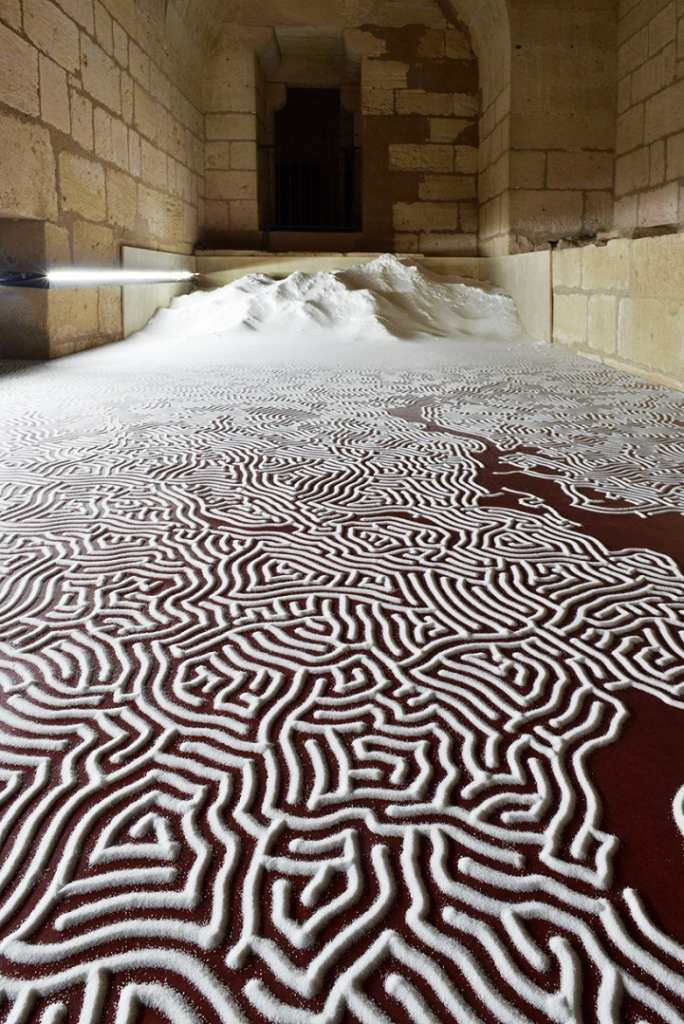Motoi Yamamoto’s Labyrinth of Salt Art
Motoi Yamamoto chooses salt as his artistic medium due to its ritualistic and symbolic meanings in Japanese culture. Salt purifies, and it is used in funerals to guide the soul.
For Yamamoto, who has endured the painful losses of his sister and wife, the pure whiteness of salt seems to “gently receive the contents of [his] heart,” providing a way to accept sorrow. Salt’s impermanent nature, dissolving when touched by humidity, also reflects the temporary essence of life itself.






Throughout his over 25 years of salt art, Yamamoto has activated spaces from medieval European castles to traditional Japanese homes with his ghostly arrangements. Major upcoming projects include a permanent seven-ton salt installation, his largest yet, at a rural art festival in Japan. He also has works appearing in group and solo shows from New York to Hiroshima.
While Yamamoto creates as a way to process personal grief, his maze-like saltscapes have clearly resonated across countries and cultures. His focus while working recalls Buddhist monks raking zen gardens – the meticulous placing of each grain a meditation, the crystal landscapes emerging as monuments to the beauty that briefly coalesces amidst the flow of life. The labor and care infused in these fragile marvels invites contemplation from viewers on our shared impermanence.